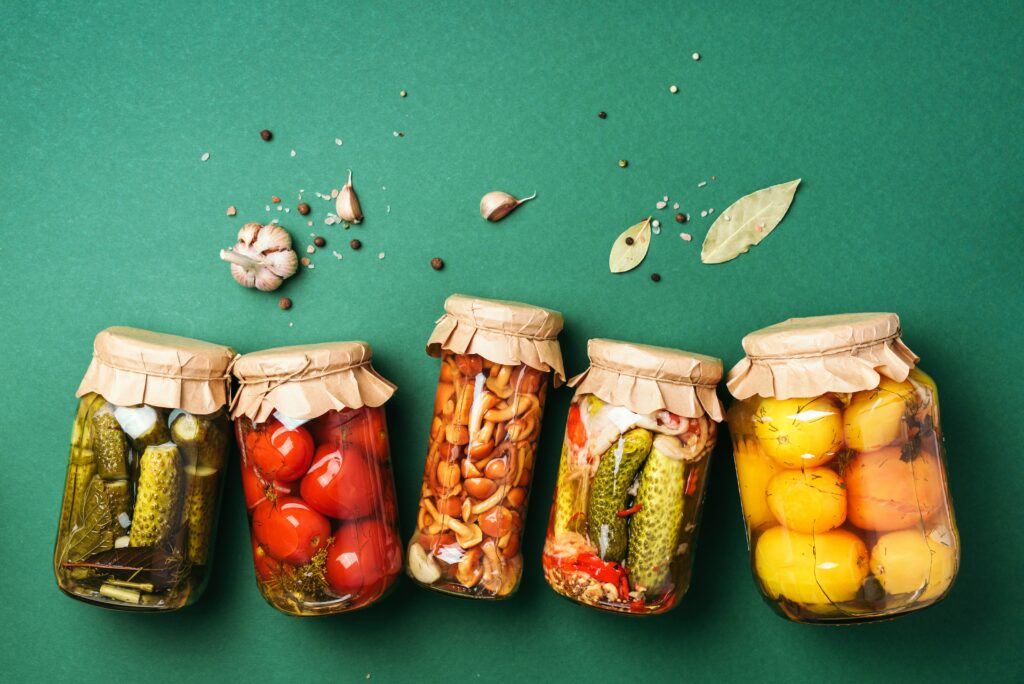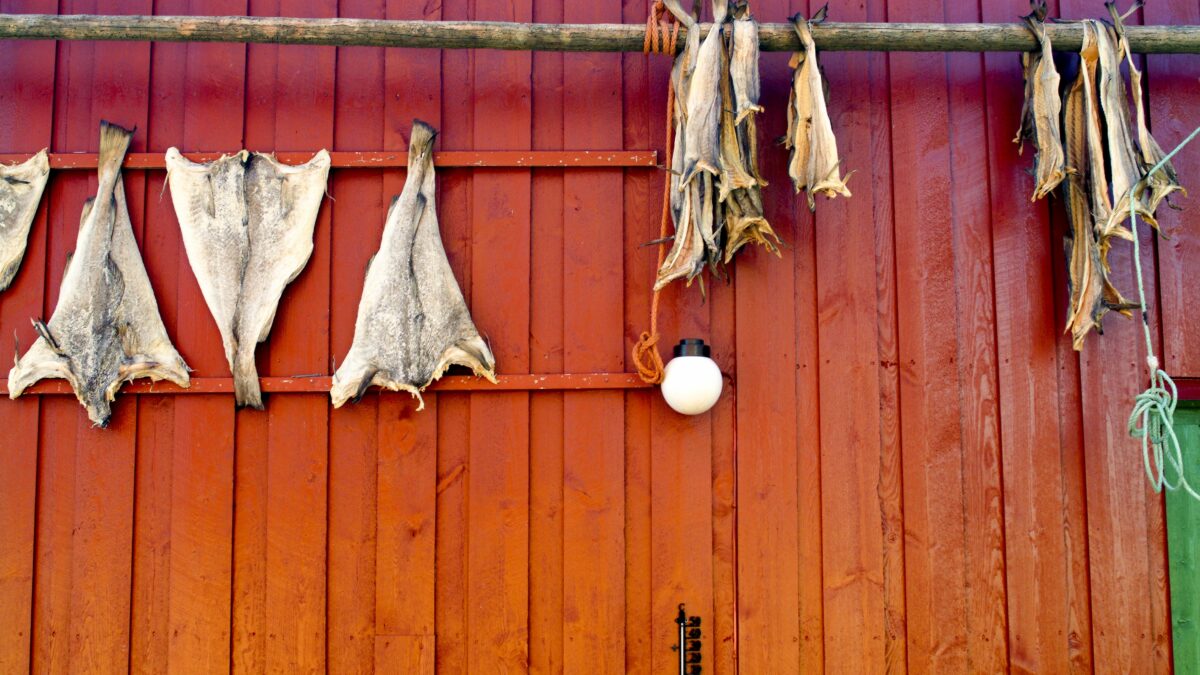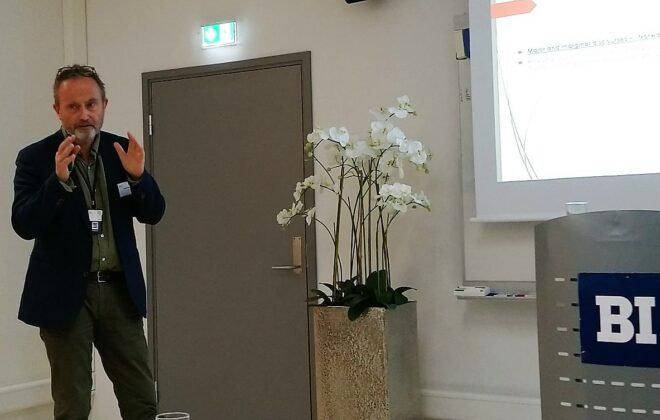Some reflections on the future of fermented foods: To fridge, or not to fridge?
An element that contributes to large scale food waste is the inability to consume the food before it becomes inedible. Refrigerating or freezing may be an option, albeit an energy intensive one and not always available. Together with climate change, the current rise on energy prices makes refrigeration an increasingly unattractive option. Additionally, such food is difficult to transport. Instead of looking for more and more advanced and energy-reliant methods, we can turn to historic practices.
Learning from our ancestors
There are many traditional technologies for food preservation which rely on controlling natural biochemical processes of decay. These old crafts include smoking, drying or fermenting. Fermenting is a way of processing food that consists of using microorganisms to transform the biochemical structure of food and slowing down oxidation through acidification. Fermentation is the most ancient technique for food processing. Although it sounds exotic, there are fermented foods in all cultures. Bread, cured meats, chocolate, cheese, yogurt, pickle vegetables, or the Norwegian lutefisk and klippfisk are also fermented foods, among many other.

Traditional cultures have practiced this since ancient times. In local culinary cultures, fermented foods are valued for their flavors, smell, texture and esthetics. “Fermentation may have been a greater discovery than fire” wrote an American author, David Rains Wallace, thus coining what became the slogan of the Fermentation Association.[1]
We can’t simply rely on technology
Many of those traditions have been pushed aside with the modern approach to food preservation, hardly relying on smart fridges and refrigerators, taking more and more of our home and supermarket space. Jihyun Ryou, from Save Food from the Fridge, critically reflects that “through the research into the current situation of food preservation, I’ve learned that we hand over the responsibility of taking care of food to the technology, the refrigerator. We don’t observe the food anymore and we don’t understand how to treat it”[2].
Gut health
But we can also observe another trend which can be described as a prominent comeback of fermentation practices. People again begin to value fermented food for their nutritional and probiotic properties, as well as aesthetic ones and the communities that emerge around these partly forgotten skills. In rediscovering the positive nutritional and probiotic qualities of fermented foods, these enthusiasts are moving in parallel with rapid scientific advances in microbiology and microbiome research. In the last ten years or so, we have seen a proliferation of a public interest in experimenting with fermentations that is part of a larger DIY (do it yourself) trend. One can trace such interest in this old technique by looking at blogs and Facebook groups and other social media platforms where people share their experiences and recipes so others can also get to carry out their home experiments with fermented food. This runs in parallel with the popularization of fermentations in restaurants, particularly as part of the New Nordic Cuisine, and similar movements in other parts of the world, that are inspired to go back to the local with new and experimental approaches.
Fermentation can make an impact
Fermentation as practice often comes back with a renewed value of the local environment and culture. This value of “the local” also entails a way of localizing that empowers social actors that may increase their ability to have control over food consumption and processing. This can be situated as part of a growing DIY culture that draws on reclaiming agency, and questions the consumer/producer divide. In that sense, people experimenting with fermentations at home is not only a form of grassroots innovation, but also holds potentials in terms of reconfiguring food systems which largely relay on intermediaries and technologies that are out of the control of the consumer such as those used in for food preservation, both chemical preservatives and refrigeration.
Alternative off-the-grid food preservation could address some of our grand challenges. It has the potential to impact our health, particularly as a source of probiotics, vitamins and certain rare nutrients. It can help us to address food waste problem but also reduce food dependency on imports and electricity consumption used by the current fridge dominated system.
Featured image: Fish hung out to dry on a wall on a boat house in Lofoten. Photo: Colourbox.
[1] https://fermentationassociation.org/david-rains-wallace-fermentation-may-have-been-a-greater-discovery-than-fire/
[2] http://www.savefoodfromthefridge.com/p/about-project.html

Julia Szulecka
Julia Szulecka is project leader of the research project BREAD - Building Responsibility and Developing Innovative Strategies for Tackling Food Waste. Read more about Julia on AFINO's webpage.

Ana Maria Delgado Aleman
Ana Delgado is an Associate Professor of Science and Technology Studies working at the TIK-Centre for Technology, Innovation and Culture (University of Oslo). Her research is concerned with how people known, make and own living things. She has collaborated with scientists in the fields of synthetic biology and microbiology. Her research has also explored the intersections between activism, and science.
She is the author of articles such as “Assembling Desires: Synthetic Biology and the Wish to Act at a Distant Time” published in Environment and Planning D; “DIYbio: Making Things and Making Futures” published in Futures, the Journal of Policy, Planning and Future Studies; and “Microbial Extractions: Sequence-based Bioprospecting, Augmented Promises and Elusive Politics”, published in Science, Technology and Human Values, among many others.




